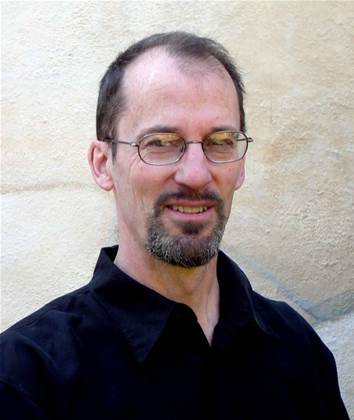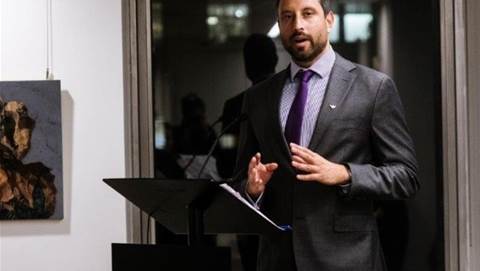Can Android save altruism?

BOINC has delivered some amazing results since Anderson built the client in 2002.
Aside from climateprediction.net, one of the greatest triumphs was Einstein@home, which aimed to detect gravitational waves previously unknown to science but predicted by Einstein’s general theory of relativity.
“These are extremely difficult to measure, and a brand new way of looking at the universe,” Anderson said.
Einstein@Home spurred a second application once researchers realised that the mathematical techniques for searching for gravitational waves turned out to be applicable to searching for pulsars.
Researchers used volunteers' computing power to go back over old data and found not one but 50 new pulsars.
“We found some very interesting astronomical phenomena - including a pulsar orbiting closely around a collapsed star,” Anderson said.
“The holy grail would be to find a pulsar orbiting a black hole. That will provide a laboratory for looking closely at black holes. There is a good chance someone will find it at some point.”
But despite these successes, citizen science has never again reached the heights of the first year of SETI@Home, when volunteers signed up en masse under the mistaken impression they were searching for little green men and spacecraft.
The projects have retained a loyal following among a known audience but the number of volunteers is dropping off. Studies have been commissioned to arrest the decline.
“If you look at the motivations of the volunteer community, you could divide them equally in three,” Anderson said. “They tend to be attracted to the scientific goals of the project - finding ET, finding a cure for Alzheimers, finding the Higgs Boson, but that isn’t the main motivation for everybody.
Equally, volunteers are motivated by BOINC’s system of awarding credits based on the volume of an individual or group’s contribution, which appear on leaderboards that can be posted on any website as a widget.
“I think of some of these guys as a 21st century version of hot rodders - the guys that built cars with custom carburettors,” he said.
“We have guys that build computers that can house eight GPU boards. They pay god knows how much in electrical bills, and have the fastest computer on the block.”
Finally, volunteer computing is a ‘social’ form of computing.
“When we look at demographics of people that volunteer - they are 92 percent male and the distribution of age is towards the high end. A big fraction are older guys, such as retired people interested in science. This gives them a forum to talk to other people about their interest.”
Why would there be less people interested in volunteer computing in an age of such cloud innovation?
The introduction of broadband caps in countries like Australia may have hurt a little, but BOINC contributors did develop a fix (users can generate a monthly usage limit in the software).
Concerns about IT security have also been alleviated - the projects running on the server are locked by code sign-in to ensure that even if hackers broke into a project server, they can’t distribute malware to clients.
Similarly, BOINC as a client application has no user privileges on a machine beyond what it requires to crunch the data.
Where SETI@Home might have been the world’s biggest volunteer computing project in the late 90s, and Folding@Home the equivalent in the noughties, today’s biggest volunteer computing project doesn’t have a shred of altruism or community about it.
Bitcoin uses distributed computing power to generate an entire new currency.
In 2013, the value of a Bitcoin has grown tenfold, with a total of $US1 billion worth of Bitcoins now circulating in the internet economy.
Not broadband caps, rising power costs or security concerns can possibly be to blame. Culture has shifted. What does it say about 2013 that geeks are more interested in making money than contributing to the great mysteries of the universe?
Anderson is at a loss to say why.
He contacted the designers of Bitcoin, concerned that they were asking users to “waste massive amounts of electricity” to mine for the virtual currency.
Mining for Bitcoins could “do something fundamentally more useful” than using that compute power on a “meaningless calculation", he proposed.
Bitcoin founders rejected the offer, however, due to concerns that BOINC projects - delivered from a central server - are not fully distributed, and therefore at risk of being shut down by authorities that - over time - will no doubt see Bitcoin as a threat.
“It hurts me to see people buying GPUs and generating electricity - who knows how much Bitcoins will be worth a year?” Anderson said.
“A certain fraction of humanity is altruistic - five percent, according to the research. That’s still a lot of people and a lot of computers.”
Where will the next generation of citizen scientists come from? Read on to find out why you won't see BOINC apps on an iPhone...




_(5).jpg&h=140&w=231&c=1&s=0)
.png&h=140&w=231&c=1&s=0)



.png&w=100&c=1&s=0)

 iTnews Benchmark Security Awards 2025
iTnews Benchmark Security Awards 2025
 Digital Leadership Day Federal
Digital Leadership Day Federal
 Government Cyber Security Showcase Federal
Government Cyber Security Showcase Federal
 Government Innovation Showcase Federal
Government Innovation Showcase Federal
 Digital NSW 2025 Showcase
Digital NSW 2025 Showcase











_(1).jpg&h=140&w=231&c=1&s=0)



